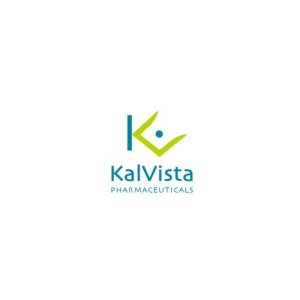Assessing Leadership Through the 7S Model

STORY INLINE POST
The McKinsey 7S model is a practical way to assess organizational strength and implement change. This model captures both emotional as well as structural factors of change to provide a complete picture before starting the journey of change. It is very important to assure you have the right leadership before starting this model, which refers to seven factors that start with the letter “S,” namely: Strategy, Structure, System, Shared Values, Skills, Style and Staff. These factors determine how an organization is designed and how its different parts work together.
I will be going through these one by one and showing how different leadership theories are better suited for each of the seven areas, demonstrating that a successful organization may outperform others by using a variety of leadership styles.
Shared Values
Values are highly abstract ideas that get to the heart of how we feel about things. What is the purpose of the organization? What are the company’s overall goals? What does it mean to be a part of this team? Every organization is different but truly successful organizations have shared values that everyone can get behind and use as a personal driving force. This is where transformational leadership is extremely powerful. Transformational leaders motivate followers by engaging their need for meaning in their work, life and career.
Strategy
Strategy is a plan of an organization to achieve its objective. A good strategy is guided by a vision and mission and shows a clear path to operate and produce intended results. Every organization needs to be planning ahead and thinking about where they want to be in the next year, five years, decade, and beyond. But development and following of an organizational strategy requires leaders to be attuned to the work needs of their followers and needs to provide them with the tools and motivations necessary for attaining the goals set forth. When developing and executing strategy, leaders have to have a strong grasp on internal talents and capabilities while also motivating their teams to accomplish the goals set forth. For these reasons, focusing on strategy will require a path-goal leadership approach.
Staff
The most precious asset of an organization is its staff. Most successful organizations rely heavily on people. Staffing an organization requires recruitment efforts that are great at finding the right kind of people who have high potential to succeed within that organization. But once those individuals are on-boarded and working, they need to be able to work among others with similar skills and aspirations. This is where Team Leadership works so well. Leaders need to coordinate employee activities and progress toward specific goals that are aligned with the strategy and shared values of the company. Team leadership focuses on the leadership style to recognize the need to organize team efforts and motivate employees as a group, not just individually. It’s not enough that individuals are motivated or are working on specific tasks diligently and effectively. They need to be doing so in the context of a larger group with larger goals. For this reason, team leadership is most effective when dealing directly with the staff of an organization.
Systems
Systems are daily processes and procedures that help to carry out day-to-day activities in an organization. Systems have a huge impact on how operations are done and how teams work on a day-to-day basis to get the job done. For any change to happen, systems are also assessed by asking questions like whether effective and efficient systems are in place to achieve the intended goal. What are the financial costs of the system and what is the additional cost to improve the process and procedures?
The leader needs to have the technical skill and organizational understanding to oversee the systems and processes that the company undertakes. They need to have the human skills to make sure people are motivated to get the work done.
Style
Style refers to leadership and management style in an organization. It is about the behavior and attitude of leadership and management. It reflects how an organization is managed, how its leadership interacts with employees. It is essential for leadership to gain everyone’s confidence before embarking on a journey of change. A good and effective style of management contributes to building a good team, which is a prerequisite of organizational change. Leaders need to be able to assess the situations at hand and make appropriate decisions based on that. These leaders need to be extremely attuned to the feelings, behaviors and culture of the organization, but a certain finesse is necessary to maintain morale and overall focus. A good leader will understand when to inspire, when to offer incentives, and when to crack the proverbial whip in order to keep the culture strong in their organization.
Skills
Skills are the abilities and capabilities of the human resources of an organization. Employees’ skills determine the performance of an organization and these play a key role in attaining competitive advantage and defining the organizational success. During organizational change, one of the most critical factors is what skill set employees within the organization possess. Any change in strategy is effective only if the employees have the required skills to implement change. Leaders here need to have a strong understanding of the technical aspects of their organizations and what skill sets are needed among the staff to make those areas function best. They also need the human skills to work with those people and ascertain what skills people may need to further develop via training or continuing education.
Structure
Rounding out our discussion of the 7S model is the Structure of the organization, the very thing that too many executives focused on excessively prior to the introduction of this model. Structure is the organization chart and it presents an organizational picture, such as who is doing what. It also describes the hierarchical layers of an organization, its departments and what are their functions. The leader needs to have the skill to understand how the pieces of the organization fit together and operate.
There are some considerations regarding the 7S model that you must be aware of. For example, this model ignores elements affecting change from outside the organization. In today’s complex business culture, external factors are also important before making strategic decisions on change. This model also lacks empirical evidence to support its effectiveness, especially for large-scale business organizations. A seasoned and experienced leadership is needed to align these limitations and all of these seven elements to determine organizational strength and provide an assessment about adopting change.








 By César Marrón | Independent Contributor -
Tue, 05/03/2022 - 16:00
By César Marrón | Independent Contributor -
Tue, 05/03/2022 - 16:00
















